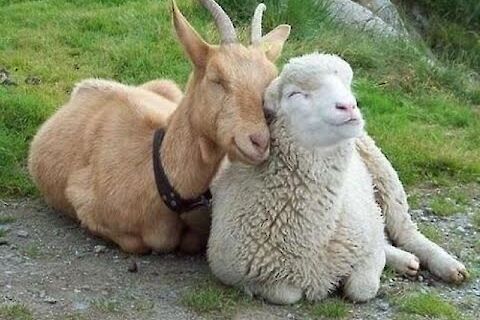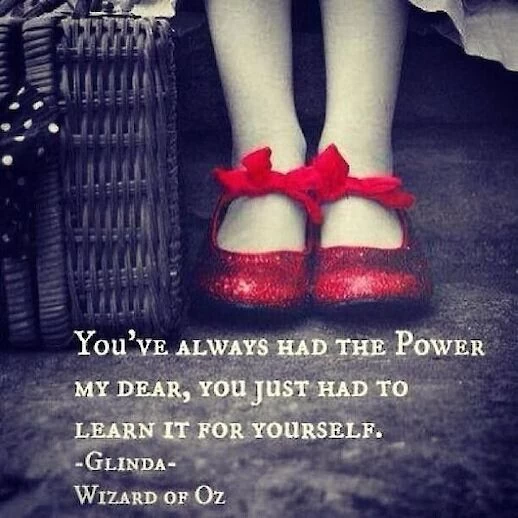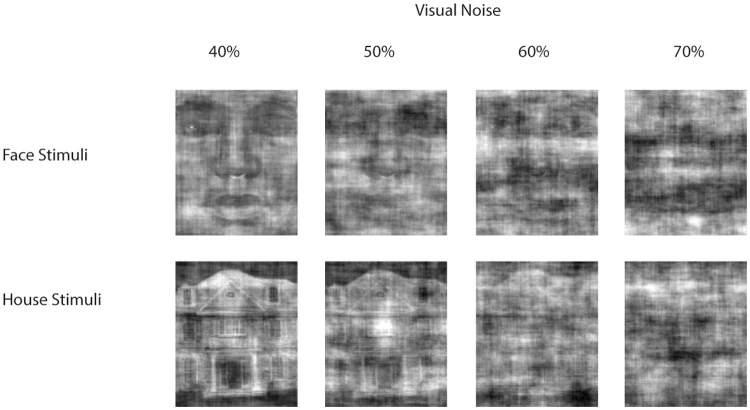

Belief, perception and ESP
Belief is a topic that is often talked about in paranormal settings. More often than not, the discussion is around our perception of what we think is paranormal. If we believe in the paranormal for example, we are often more prone to think something is paranormal. Our belief systems influence our own biases in this regard.
Perceptual bias
I have written a lot about cognitive bias and the different ways our belief systems influence the way we perceive the world. While I personally don't like the terms, people are often grouped into two categories when it comes to paranormal belief. It is skeptic and believer. You also have the in-between which is a skeptical believer. A believer is considered to be someone who believes in the paranormal. A skeptic is someone who does not. A skeptical believer is considered to be in between. While I am not a fan of these labels because I feel like we have evolved past them, I will use them for the sake of this article as they are categorized in a study that we will talk about later.
Below is a snippet into a study on perceptual bias and the paranormal.
Previous studies have shown that one’s prior beliefs have a strong effect on perceptual decision-making and attentional processing. The present study extends these findings by investigating how individual differences in paranormal and conspiracy beliefs are related to perceptual and attentional biases. Two field studies were conducted in which visitors of a paranormal conducted a perceptual decision making task (i.e. the face / house categorization task; Experiment 1) or a visual attention task (i.e. the global / local processing task; Experiment 2). In the first experiment it was found that skeptics compared to believers more often incorrectly categorized ambiguous face stimuli as representing a house, indicating that disbelief rather than belief in the paranormal is driving the bias observed for the categorization of ambiguous stimuli. In the second experiment, it was found that skeptics showed a classical ‘global-to-local’ interference effect, whereas believers in conspiracy theories were characterized by a stronger ‘local-to-global interference effect’. The present study shows that individual differences in paranormal and conspiracy beliefs are associated with perceptual and attentional biases, thereby extending the growing body of work in this field indicating effects of cultural learning on basic perceptual processes.
The experiment was conducted at two paranormal fairs, which took place in big sports halls in the suburbs of Dutch cities. Four laptop computers (Dell Latitude E6140) were placed on a long table covered by a black cloth. Participants were seated behind the table and after signing the consent form the experimental task was explained. Participants were instructed that they were going to see pictures representing either a face or a house, under different levels of visual noise. They were required to indicate whether they believed the picture represented a face or a house by pressing one of two buttons on a computer keyboard (i.e. left and right arrow key). It was emphasized that if participants were uncertain about what the picture represented, that they should trust their first intuition and not think too long. The laptop was placed in front of the participant at a viewing distance of approximately 60 cm.
At the beginning of the experiment, participants conducted 10 practice trials to familiarize with the task. Each picture was presented for 3500 ms or until a response had been made. The inter-stimulus interval was 1000 ms. In total the experiment consisted of 240 trials according to the following design: 4 Noise Levels (40, 50, 60 and 70%), 2 Stimulus Categories (Faces vs. Houses) and 30 repetitions per category. The experiment was programmed using Presentation software (Neurobehavioral systems, Albany, CA, USA). At the end of the experiment, participants completed the revised paranormal belief scale (RPBS; [33])and indicated their highest level of education. The rationale for measuring paranormal beliefs following the experimental task was mainly practical: following completion of the computer task, participants could fill in the questionnaire forms at their own pace, while the laptop could be used for the next participant. In total, the experiment took about 20–30 minutes.
What was interesting in the above experiment was that the skeptics were described as more often incorrectly indicating that the face was in fact a house. It suggests that disbelief in the paranormal meant that this bias was driving the way they perceived the image. There was a second experiment conducted again indicated a clear difference between the way the group of believers and skeptics perceived information. You can read the full study and results here: https://www.ncbi.nlm.nih.gov/pmc/articles/PMC4482736/
This is something I know I talk about a lot on my blog and in general, the paranormal field is pretty aware on some level that what we believe influences us. What is not as openly discussed in the mainstream paranormal field, is how belief can possibly influence a person's potential psychic ability. Many people believe that we are all capable to a certain degree of ESP (Extra Sensory Perception). Parapsychologists spend a lot of time studying this area and testing these abilities in different ways. There have actually been studies in the area of belief and ESP and found that those who believe in ESP score higher in testing exercises than those who do not believe.
The Sheep Goat Effect
In 1958, Gertrude R. Schmeidler coined the term sheep goat effect which relates to the effect that a person's belief and attitude plays on how successful they are in ESP tests. She categorized people into two different areas. Sheep were those who believed in ESP and PSI ability. Goats were those who did not believe. During tests in both solo and group settings, the sheep scored higher than goats.
Schmeidler (1943, 1945) categorized participants in paranormal experiments
as either those who think that ESP is possible under a given experimental
condition ("sheep"), or those who rejected this possibility ("goats").The definition has been extended to include sheep as those who "believe
that ESP exists as a genuine phenomenon" (Thalbourne 2003:114), thus
excluding goats from this belief. Based on pivotal studies (Lawrence 1993,
Palmer 1971, 1977, Schmeidler & McConnell 1973), paranormal belief as
measured on sheep-goat scales tends to be a predictor of psi outcomes, with
sheep producing significant hit rates (i.e. psi-hitting) and goats producing
significant miss rates (i.e. psi-missing). For example, Lawrence's (1993)
meta-analysis of 73 studies (totalling 685,000 trials by 4,500 participants)
dating back to 1947 demonstrated an accumulative sheep-goat effect that
was moderate in size and highly significant - sheep consistently scored
better than goats.Storm,, Lance & Ertel, Suitbert & Rock, Adam. (2013). The Sheep–Goat Effect as a Matter of Compliance vs. Noncompliance: The Effect of Reactance in a Forced-Choice Ball Selection Test. Journal of Scientific Exploration. 27. 393-411.
Following on from this, parapsychologists now often use the term sheep and goat during testing and use it as a scale to interpret results. There is quite a lot of information on this area, and if you would like to read into it further, I recommend reading this entry from the psi encyclopedia which goes into a lot more detail: https://psi-encyclopedia.spr.ac.uk/articles/sheep-goat-effect
So we know that believing in the paranormal means we are more likely to perceive something as paranormal. We now know that believing in ESP means we are likely to have a higher success rate when testing. So we need to ask the question, just what role does belief play on a grand scale? Is just us believing enough for us to manifest something paranormal? We think back to the Philip Experiment where parapsychologists created a 'ghost' made up from a fake back story, just by believing in it. Is our belief enough to create our own spirits? There have even been theories that indicate belief could also cause UFO lights in the sky! To read more about this check out my article: Are UFO sightings a form a psychic projection
We are always wondering what the key is to the paranormal or even how we can access psychic abilities. Maybe it has been in us all along. Maybe we just need to believe?

References
https://www.encyclopedia.com/science/encyclopedias-almanacs-transcripts-and-maps/sheep-goat-hypothesis
https://www.researchgate.net/publication/278329312_The_Sheep-Goat_Effect_as_a_Matter_of_Compliance_vs_Noncompliance_The_Effect_of_Reactance_in_a_Forced-Choice_Ball_Selection_Test
The Australian Sheep-Goat Scale: An Evaluation of Factor Structure and Convergent Validity
Kenneth Drinkwater*, Andrew Denovan, Neil Dagnall and Andrew Parker (2018)
https://psi-encyclopedia.spr.ac.uk/articles/sheep-goat-effect
If you enjoy LLIFS, consider buying me a book (otherwise known as buy me a coffee but I don't drink coffee and I LOVE books). Your donation helps to fund the LLIFS website so everyone can continue to access great paranormal content and resources for FREE!

Top pages with similar subjects
Don't forget to follow the Facebook page for regular updates
Join the mailing list to receive weekly updates of NEW articles. Never miss an article again!
Buy the latest and past issues Haunted Magazine
Check out the books written by LLIFS
